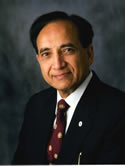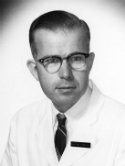Long-term regional control after radiation therapy and neck dissection for base of tongue carcinoma Journal Article
| Authors: | Lee, H. J.; Zelefsky, M. J.; Kraus, D. H.; Pfister, D. G.; Strong, E. W.; Raben, A.; Shah, J. P.; Harrison, L. B. |
| Article Title: | Long-term regional control after radiation therapy and neck dissection for base of tongue carcinoma |
| Abstract: | Purpose: Minimal literature exists with 10-year data on neck control in advanced head and neck cancer. The purpose of this study is to determine long-term regional control for base of tongue carcinoma patients treated with primary radiation therapy plus neck dissection. Methods and Materials. Between 1981-1996, primary radiation therapy was used to treat 68 patients with squamous cell carcinoma of the base of tongue. Neck dissection was added for those who presented with palpable lymph node metastases. The T-stage distribution was T1, 17; T2, 32; T3, 17; and T4, 2. The N-stage distribution was N0, 10; N1, 24; N2a, 6; N2b, 11, N2c, 8; N3, 7; and Nx, 2. Ages ranged from 35 to 77 (median 55 years) among the 59 males and nine females. Therapy generally consisted of initial external beam irradiation to the primary site (54 Gy) and neck (50 Gy). Clinically positive necks were boosted to 60 Gy with external beam irradiation. Three weeks later, the base of tongue was boosted with an Ir-192 interstitial implant (20-30 Gy). A neck dissection was done at the same anesthesia for those who presented with clinically positive necks, even if a complete clinical neck response was achieved with external beam irradiation. Neoadjuvant cisplatin-based chemotherapy was administered to nine patients who would have required a total laryngectomy if their primary tumors had been surgically managed. The median follow-up was 36 months with a range from 1 to 151 months. Eleven patients were followed for over 8 years. No patients were lost to follow-up. Results: Actuarial 5- and 10-year neck control was 96% overall, 86% after radiation alone, and 100% after radiation plus neck dissection. Pathologically negative neck specimens were observed in 70% of necks dissected after external beam irradiation. The remaining 30% of dissected necks were pathologically positive. These specimens contained multiple positive nodes in 83% despite a 56% overall complete clinical neck response rate to irradiation. Regional failure occurred in only two patients, neither of whom underwent adjuvant neck dissection. Symptomatic neck fibrosis (RTOG grade 3) was not observed. Actuarial 5- and 10-year local control was 88% and 88%, disease-free survival was 80% and 67%, and overall survival was 86% and 52%. Conclusion: For base of tongue cancer, most patients can obtain long-term regional control with no severe complications after definitive radiation therapy, plus neck dissection for those who present with lymphadenopathy. Complete clinical regression of palpable neck metastases after irradiation poorly correlates with pathologic outcome. Our current policy is to include neck dissection at the time of implantation for patients who present with palpable neck metastases. We realize that this therapeutic approach may overtreat some patients, but we are reluctant to change our policy in light of these excellent outcomes. |
| Keywords: | adult; cancer survival; treatment outcome; aged; middle aged; treatment failure; major clinical study; laryngectomy; neck dissection; carcinoma, squamous cell; cisplatin; treatment planning; cancer adjuvant therapy; cancer radiotherapy; combined modality therapy; cancer staging; neoplasm staging; radiotherapy; surgery; neck; tongue neoplasms; tongue carcinoma; interstitial radiation; beam therapy; regional control; humans; prognosis; human; male; female; priority journal; article; base of tongue |
| Journal Title: | International Journal of Radiation Oncology, Biology, Physics |
| Volume: | 38 |
| Issue: | 5 |
| ISSN: | 0360-3016 |
| Publisher: | Elsevier Inc. |
| Date Published: | 1997-07-15 |
| Start Page: | 995 |
| End Page: | 1000 |
| Language: | English |
| DOI: | 10.1016/s0360-3016(97)00148-x |
| PUBMED: | 9276364 |
| PROVIDER: | scopus |
| DOI/URL: | |
| Notes: | Article -- Export Date: 17 March 2017 -- Source: Scopus |
Altmetric
Citation Impact
BMJ Impact Analytics
Related MSK Work










